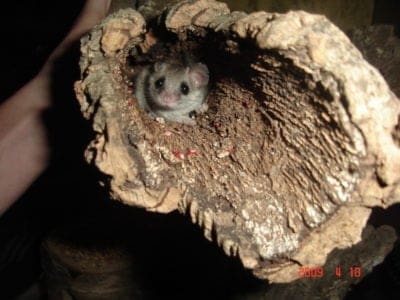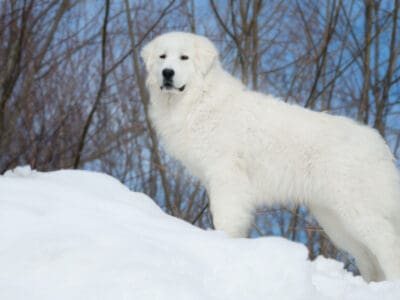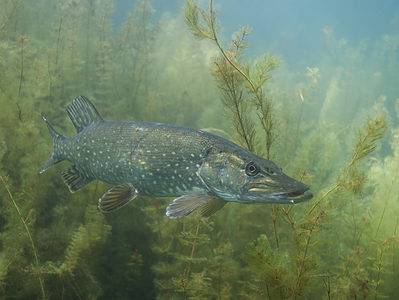Below you’ll find a complete list of Italian animals with pictures. We currently track 280 animals in Italy and add more daily!
- National Animal of Italy: Italian Wolf
- Approximate Number of Animal Species in Italy (Excluding Bacteria, Viruses): 57,000
- Most Dangerous Animal in Italy: Marsican Brown Bear
Italy Wildlife and Geography
Italy is a biodiversity hot spot that’s home to more animal species than any other European country. Impressively, a third of the continent’s fauna is represented in Italy. Why? Because the boot-shaped peninsula is the joint connecting Eastern Europe, Western Europe, Africa, and the Middle East. As such, it’s a cornucopia of ecological features that includes the Alps and Apennine mountain ranges, central woodlands, and southern shrublands. The fauna-rich cherry on top is Italy’s 4,900 miles (8,000 kilometers) of coastline that falls smack in the middle of the Mediterranean Basin biodiversity zone.
Italy’s wildlife is so impressive that UNESCO declared the Dolomiti Bellunesi National Park a World Heritage Site in 2009.
Animals of Italy
Excluding bacteria, viruses, and most microscopic invertebrates, Italy is home to about 57,000 known species, 4,777 of which are endemic to the region.
Italian Mammals

The smallest mammal in the world, known as the Etruscan shrew, is native to Italy.
©Wirestock Creators/Shutterstock.com
Between 102 and 126 mammal species live within Italy and its surrounding waters. According to the IUCN, of those mammals, four are Near Threatened, nine are Vulnerable, two are Endangered, and one, the North Atlantic right whale, is Critically Endangered.
Commonly spotted mammals in Italy include several types of shrews, Alpine marmots — which look like chubby squirrels — European snow voles, wild boars, and steinbocks.
Notably, Etruscan shrews — the smallest known mammal by mass — reside in Italy. The tiny and solitary animals weigh only .063 ounces, which is about half as heavy as a pencil. Another standout Italian mammal is the Alpine ibex. Found in northern Italian mountain ranges, males of the goat-antelope species are known for their gigantic, backward-hooking horns.
Italian Birds

Eurasian Eagle-owl (Bubo bubo) standing on a post in Italy.
©LesPalenik/Shutterstock.com
How many bird species are in Italy? The latest count stands at 516, but only about 267 nest in the nation. Bluethroats, hoopoe, and the stunning European roller, with its turquoise and electric blue feather patterns, are common. Birds of prey in the region include Bonelli’s eagles, Eurasian eagle-owl, and the griffon vulture.
The bluethroat is a small, migratory bird native to Europe and Asia. It can be found in grasslands, thickets, forests, and wetlands during migration. The Hoopoe is a colorful bird that lives in open countryside with trees or shrubs for cover. It eats invertebrates like worms and insects, as well as fruits and berries. The European roller has an impressive turquoise-and-electric blue feather patterning which makes it stand out from its peers. They inhabit open countries with plenty of trees, such as farmland, steppes, wooded areas, and even coastal regions at times.
Birds of prey are common across Italy’s diverse landscapes, too, including the Bonelli’s eagles which feed on medium-sized birds while hunting over open country or near woodland edges. The Eurasian eagle owl inhabits mountain meadows, forest clearings, and cultivated lands. The griffon vulture prefers mountainous terrain but can also live along cliffs close to rivers or coastlines where they feed on carrion mostly obtained by scavenging carcasses of dead animals such as deer or sheep left behind by hunters.
Italian Reptiles and Amphibians
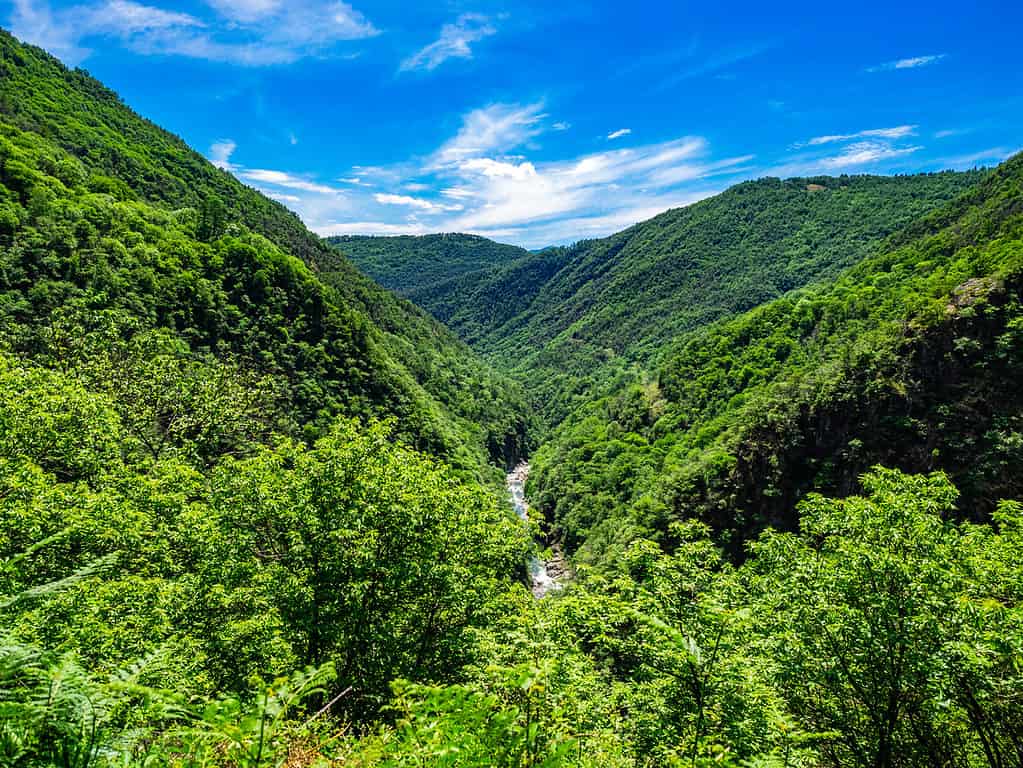
The ponds and streams of Italy are a great place to see salamanders, frogs and newts in their natural habitat.
©iStock.com/Ivan Yeudashenka
Scientists cannot agree on the number of reptiles and amphibians in Italy. Numbers range between 44 and 59 each. Common reptiles and lizards found in the country include spectacled salamanders, Italian newts, Italian stream frogs, Sicilian pond turtles, and the Italian Aesculapian snakes.
Spectacled salamanders are found mostly in the northern part of Italy, living in moist forests and alpine meadows. Italian newts make their home near ponds and slow-moving streams, typically preferring wooded areas such as beech forests. The Italian stream frogs live mainly along fast-flowing rivers in central Italy, with a preference for rocky habitats.
Sicilian pond turtles inhabit shallow ponds, marshes, and lakes across the island of Sicily while the Italian Aesculapian snakes can be found all over the country, usually close to agricultural lands or scrublands, which provide them with plenty of food sources. All five species share an affinity for humid climates, but they also have specialized requirements that must be met if they are to survive in their respective habitats.
Italian Fish
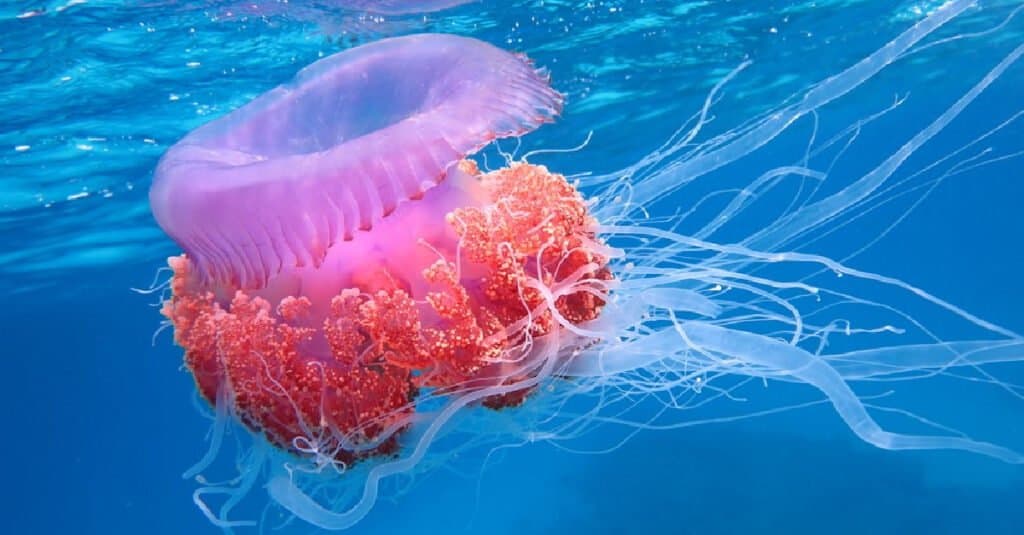
Jellyfish and many other marine wildlife can be found off the coast of Italy.
©Chai Seamaker/Shutterstock.com
Hundreds of fish and marine mammals swim through Italian waters. Common species include the Italian loach and Italian barbel. Jellyfish, porcelain crabs, and octopus are also plentiful.
In addition to the Italian loach and Italian barbel, many other fish species inhabit the waters of Italy. These include sea bass, mackerel, sole, anchovies, mullet, and tuna. All of these species can be found in abundance in the Mediterranean Sea or the Adriatic Sea.
The largest fish living in Italian waters is probably the bluefin tuna which can grow up to 6 feet long and weigh over 882 lbs. The smallest fish native to Italy is likely one of the goby species, such as the Sicilian Tyrrhenian Goby, which only grows up to 1.5 inches long.
Other aquatic creatures commonly seen around Italy’s coasts include lobsters, shrimps, crabs, and cuttlefish. There are also numerous types of coral reef organisms, such as sponges and anemones, lurking beneath its waves!
Italian Insects
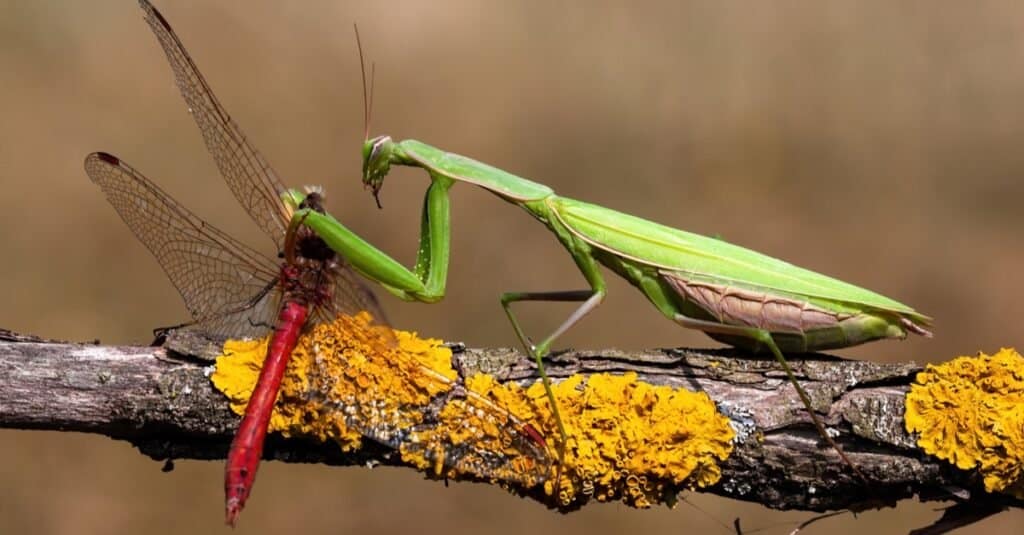
Green European mantis, Mantis religiosa, and red dragonflies are both native to Italy.
©WildMedia/Shutterstock.com
Insects in Italy are varied and plentiful, with more than 32,000 species recorded. This includes a variety of dragonflies and damselflies, grasshoppers and crickets, butterflies and moths, beetles, true bugs, bees, wasps, ants and sawflies, and flies, as well as many other orders.
Italy is also home to several endemic insect species, including some rare beetle species located in the alpine regions. Insects play an important role in Italian ecology, providing essential services such as pollination for plants but also serving as food sources for birds and mammals.
Researchers and naturalists have observed nearly 200 butterfly and moth species flit through the nation’s skies. Scarlet dragonflies, Cleopatra butterflies, and Praying mantes are all at home in the southern European country.
Endangered Animals in Italy
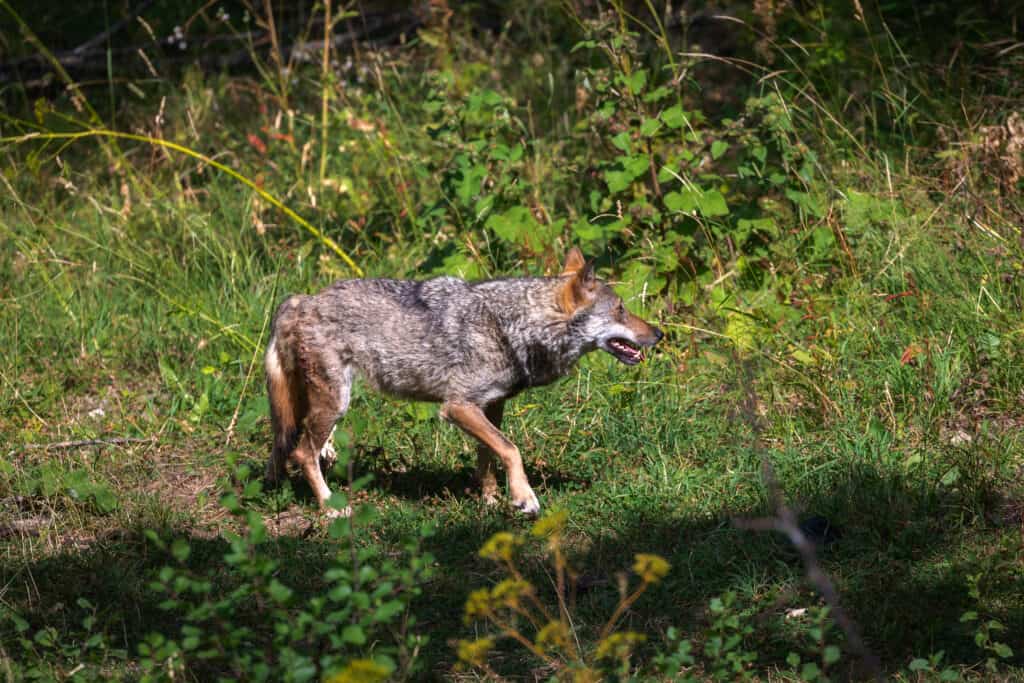
The Italian Apennine wolf is vulnerable to extinction in Italy.
©iStock.com/Gennaro Leonardi
Below is a table that details a sampling of Italian animals deemed threatened, to some degree, by the International Union for the Conservation of Nature. This Italian endangered animals list is not exhaustive.Animal Alternative Name IUCN Classification Region Threats Interesting Fact Corsican Hare Apennine Hare, Italian Hare Vulnerable Southern and Central Italy Habitat Loss, Hunting, Food Competition Once Regarded As a Subspecies of the European Hare Sardinian Long-Eared Bat NA Vulnerable Three Caves in Central Sardinia Tourism Disturbance, Habitat Loss Only Surviving Mammal Species Endemic to Sardinia Corsican Red Deer Corsican Deer, Sardinian Deer Near Threatened Corsica Island, Sardinia Island Habitat Loss Smallest of the Red Deer Subspecies Brown Cave Salamander Gene’s cave salamander, Sardinian cave salamander, Sardinian salamander Vulnerable Sardinia Habitat Loss Habitat Loss Italian Cave Salamander NA Near Threatened Northern and Central Apennine Mountains Habitat Loss Prefers to Live around Limestone Rock Monte Albo Cave Salamander Stefani’s salamander Near Threatened Sardinia Habitat Loss Reproduces Through Direct Development of Terrestrial Eggs Sardinian Brook Salamander Sardinian mountain newt Endangered Sardinia Habitat Loss, Pollution, Tourism Disturbance Stays Close to Water at All Times Apennine Yellow-Bellied Toad NA Endangered Throughout Italy Habitat Loss Hibernates from November to April Aeolian Wall Lizard Raffone’s Wall Lizard Critically Endangered Aeolian Islands Competition with Italian Wall Lizard Only Four Populations Remain Salmo Carpio Carpione, Carpione del Garda Critically Endangered Only in Lake Garda Overfishing, Pollution, Competition Didn’t Survive in any Other Lakes to which it Was Introduced Salmo Fibreni Fibreno Trout Vulnerable Lago di Posta Fibreno Habitat Loss Freshwater Trout Common Bent-Wing Bat Schreibers’s Long-Fingered Bat, Schreibers’s Bat Vulnerable Africa, Asia, Europe, Middle East Pesticides, Habitat Loss Named after Austrian Naturalist Carl Franz Anton Ritter von Schreibers Italian Wolf Apennine Wolf Vulnerable Apennine Mountains, Western Alps Human-Wolf Conflict, Poaching Protected Since 1970s Marsican Brown Bear Apennine Brown Bear Critically Endangered Apennine Mountains Human-Bear Conflict, Habitat Loss Has a Different Hibernation Routine than Other Brown Bears
Italian officials keep an eye on conservation, and the country supports 20 national parks and 130 regional parks. Additionally, lawmakers have carved out 150 federally protected wildlife territories, 270 state ones, and 16 marine reserves.
The Italian government has taken many steps to protect endangered species in Italy. In particular, the government has established a network of federally protected wildlife areas throughout the country. These areas are important habitats for threatened and endangered species, providing them with much-needed protection from threats such as poaching and habitat destruction.
The Italian government also works closely with environmental organizations, conservation groups, and other stakeholders to develop plans for protecting these areas and their associated species. Additionally, they have created laws that severely punish those found guilty of violating these protections or engaging in activities that could harm the animals living there. All of these efforts are aimed at ensuring the survival of some of Italy’s most vulnerable species so they can continue to be cherished by future generations.
Most Dangerous Animals in Italy
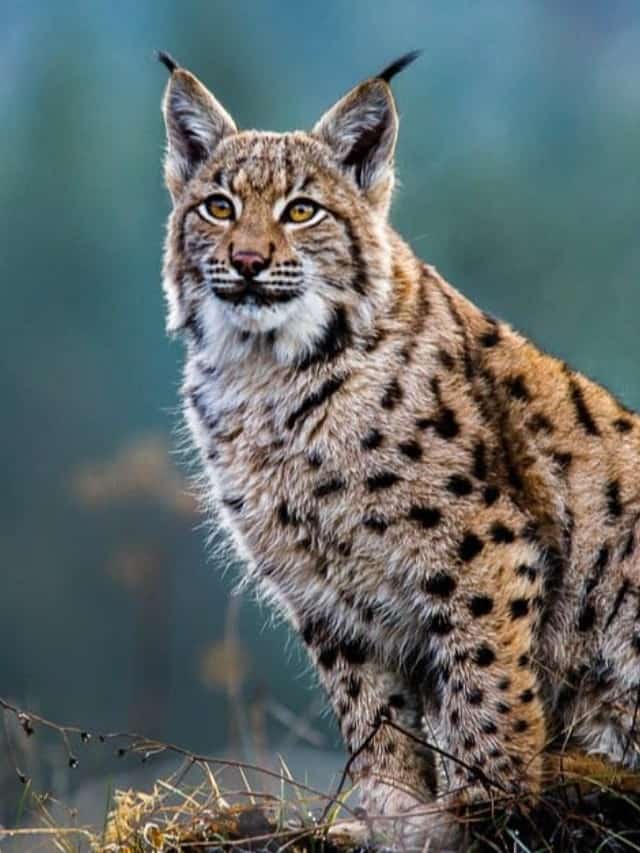
Eurasian lynx can be found in Italy and are dangerous if startled or cornered.
©Tomas Hulik ARTpoint/Shutterstock.com
Italy is bursting at the seams with fauna species, and some are dangerous! Although, compared to a country like Australia, which is awash in lethal animals, Italy’s creatures are comparatively tame.
The six most dangerous animals in Italy are:
- Marsican Brown Bears
- Eurasian Lynx
- Asp Vipers
- Jellyfish
- Weever Fish
- Black Widow Spiders
Marsican Brown Bears, also known as Apennine brown bears, are an endangered species of bear found in the mountains of central Italy. They typically shy away from human contact and rarely attack unless threatened or provoked. However, they can become dangerous if habituated to humans through feeding or carelessness around their young.
Eurasian Lynx is the only species of lynx present in Italy, and it inhabits forest areas across northern and central parts of the country. The animals are generally shy but may become aggressive if startled or cornered by a person.
Asp Vipers are common throughout much of Europe, including Italy, where they inhabit grassy meadows and forests at low altitudes up to about 2200 meters (7,200 feet) above sea level. Though normally non-aggressive towards humans, these snakes will strike when disturbed or threatened and have large fangs that deliver a painful bite with potentially serious consequences for those sensitive to venomous snake bites.
Jellyfish stings can be an issue along Mediterranean beaches, especially during summer months when jellyfish populations swell and warmer water temperatures bring them closer to shorelines than usual. Even though most jellyfish sting sensations will range from just irritating to mildly painful, depending on the severity of the sting. Some box jellyfish species may produce life-threatening reactions in people who experience severe allergic reactions to their toxins.
Weever Fish live on sandy bottoms near rocky coastlines along Italian coasts where they bury themselves in the sand waiting for prey. Their sting is venomous and long-lasting.
3 Rarest Animals in Italy
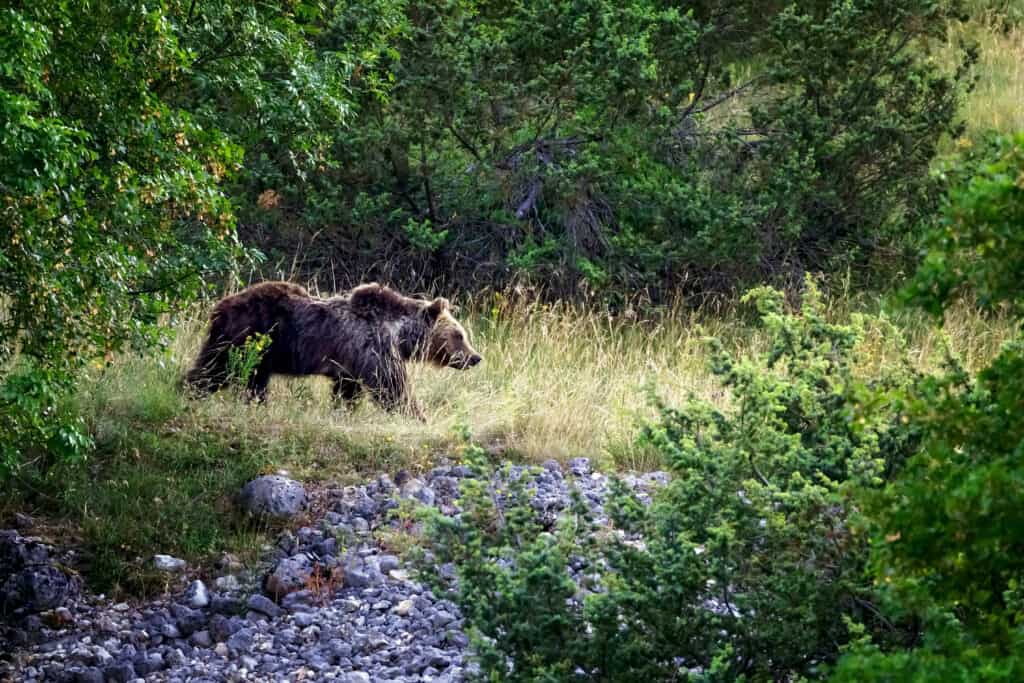
Marsican brown bears are significantly smaller than grizzlies and are a rare sight in Italy.
©Claudio Bottoni/Shutterstock.com
The rarest animals in Italy that are not extinct or endangered are the Iberian lynx, the Marsican brown bear, and the Italian wolf. The Iberian lynx is a wildcat native to the region of Andalusia in Spain and can occasionally be spotted across southern Italy. Its habitat includes forests, shrubland, mountains, and grasslands.
The Marsican brown bear is an endangered species found only in central Italy’s Abruzzo National Park, where it inhabits forested areas near rivers and streams. Lastly, we have the Italian Wolf, which lives mainly within protected national parks throughout mainland Italy but can also be seen roaming through alpine regions bordering France and Switzerland. These wolves typically inhabit mountainous terrain with dense vegetation located close to water sources such as lakes or rivers.
Largest Animals in Italy

Rare sighting of a Marsican Brown Bear above a pear tree in Italy. There are only 50 left in the country.
©Massimiliano Paolino/Shutterstock.com
The largest animal in Italy is the brown bear. They can grow up to 6 feet long and weigh around 478 pounds!
The Marsican brown bear is the largest animal in Italy, but it is also one of the most endangered species. It was estimated that only 50-60 bears were living in Italy’s Central Apennines as of 2018. Unfortunately, their numbers have been decreasing due to poaching, habitat destruction, and illegal hunting. The Italian government has taken steps to protect the remaining Marsican brown bears by setting up protected areas for them. They are currently listed as an endangered species on the IUCN Red List, and efforts are being made to increase their population through breeding programs.
Other large animals that live in Italy include wolves, wild boars, foxes, roe deer, chamois, red deer, marmots, and ibex. These animals are all found in the Italian Alps or other mountainous regions throughout the country. Some of them also inhabit forested areas as well as fields and wetlands.
National Animal of Italy
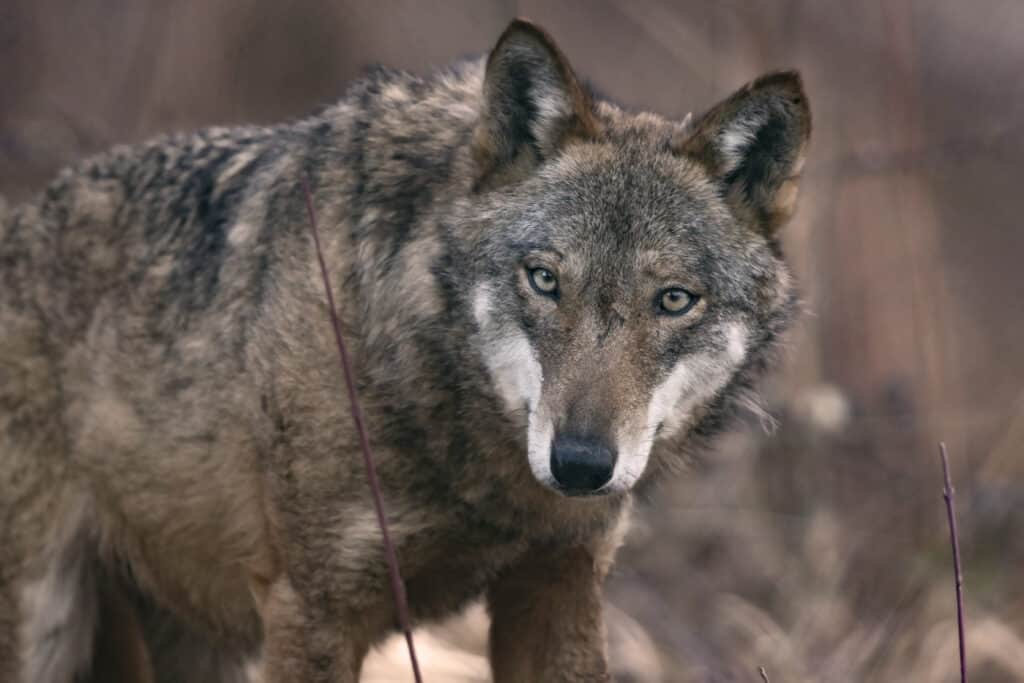
Apennine wolves live in Italy and Switzerland in the wild. There are only 600-700 left.
©iStock.com/Ciro de Simone
The Italian wolf — also known as the Apennine wolf — is the national animal of Italy. Its symbolism dates back to the mythological story of Romulus and Remus. According to legend, a she-wolf discovered the infant twins and kept them alive via interbreed suckling. Eventually, humans took the boys in, and they went on to found the nation of Rome.
Italian wolves are a subspecies of grey wolves native to the Italian Peninsula. Today, between 600 and 700 individuals are alive and well. But in the not-too-distant past, only about 70 Italian wolves were left. Thanks to public and private conservation efforts, the species is making a comeback.
Flag of Italy
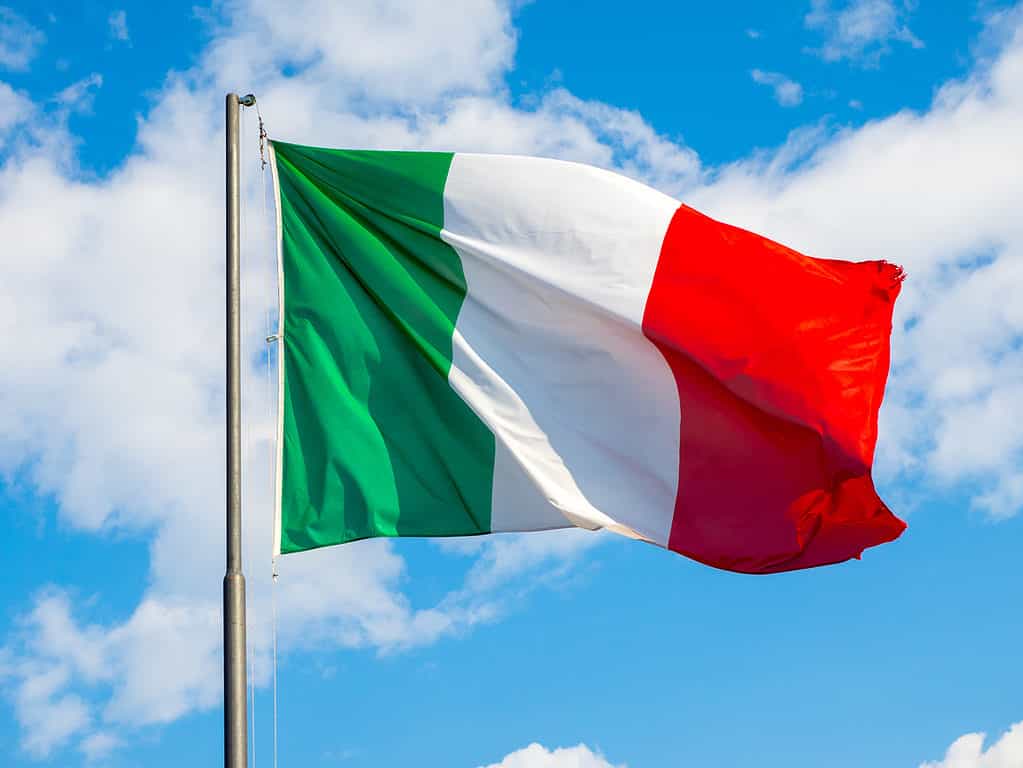
The national flag of Italy waving into the blue sky
©iStock.com/okfoto
The flag of Italy is a vertical tricolor with the colors green, white, and red. These three colors have been associated with Italy for centuries, but it was Napoleon who first chose them for the modern Italian flag.
It is said that he designed this tricolor to combine the symbolic colors of two existing flags. One from Milan (red and white) and another from Genoa (green). On January 7th, 1797, the design was formally adopted by France as its national flag.
The meaning behind this combination has changed over time. It was originally used to represent the House of Savoy, a powerful Italian dynasty that once ruled over much of what is now modern-day Italy. Today however, the tricolor represents hope in renewal for Italy after years of strife, faithfulness to traditional values and culture, as well as love for one’s homeland. In addition to its symbolic importance in terms of national pride and identity, it also serves as an important reminder that despite their differences, each region within Italy still works together towards a common goal – making Italy great again!
National Parks in Italy
Italy is a country of unparalleled beauty, and its national parks are no exception. From the majestic Dolomites in the north to the lush greenery of Maremma Natural Park in Tuscany. Italy features some of the world’s most spectacular outdoor scenery. Whether you’re looking for thrilling hikes, scenic drives, or peaceful camping trips, there’s something for everyone at any one of these ten popular national parks in Italy.
At Gran Paradiso National Park near Aosta Valley, visitors can explore alpine lakes and meadows filled with wildlife, such as ibex and chamois. For a more coastal experience, head to Asinara National Park on Sardinia Island, where you can take part in activities such as snorkeling and boat tours around the island’s many coves. And if it’s history that interests you, then visit Pollino National Park, located along southern Italy’s Ionian Sea coastline, which was once home to ancient Greek settlements dating back thousands of years ago.
For an unforgettable adventure through some of Europe’s most beautiful landscapes, be sure to explore one or all ten of these stunning national parks when visiting Italy!
Plants Native to Italy

You can see fields of crocuses blooming all around Italy
©
The landscape of native Italy is incredibly diverse and is home to many breathtaking trees. While most of Italy is made up of evergreens, the country boasts a wide variety of ornamentals and fruit trees. Among the most breathtaking trees, we can find the Mediterranean cypress, the Italian stone pine, the downy oak, the black poplar, and more.
Italy is home to a wide variety of native plants and wildflowers, from the Mediterranean coastline to the Alps. Commonly found wildflowers in Italy include cyclamen, edelweiss, crocus flowers, buttercups, poppies, lilies, and gentians. These can be found throughout the country during springtime when they are at their most vibrant and abundant.
The most common type of tree in Italy is the Italian alder tree (Alnus cordata), which grows across much of the north-central part of Italy. This species has an impressive growth rate that allows it to thrive even in challenging climates with cold temperatures or poor soil conditions. Additionally, this species produces nitrogen-rich fruits that attract wildlife, such as birds and other small animals.
Italian Animals
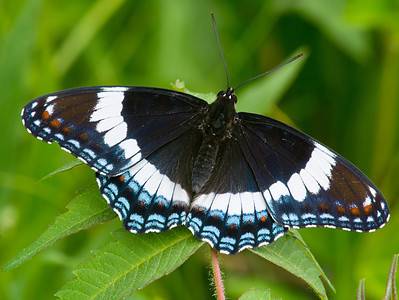
Admiral Butterfly
Stunningly beautiful wings

Ant
First evolved 100 million years ago!
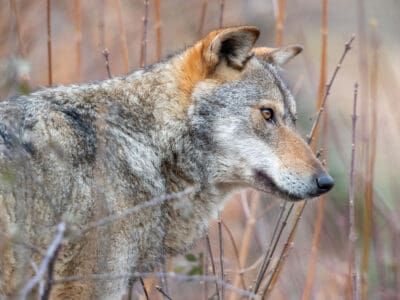
Apennine Wolf
Wolves do not howl at the moon. They howl to communicate with other members of their pack.
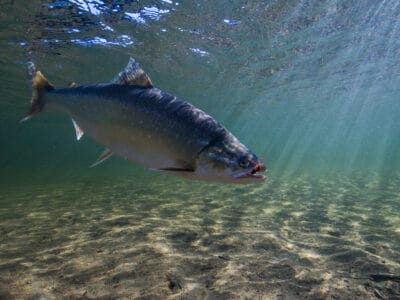
Arctic Char
Arctic char is the northern-most fish; no other fish lives anywhere further north!

Armyworm
They are so named because they "march" in armies of worms from one crop to another in search of food
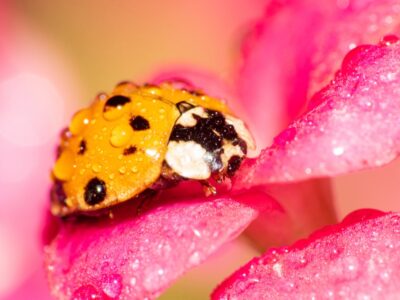
Asian Lady Beetle
Asian lady beetles infest indoor spaces, but they do not reproduce indoors.
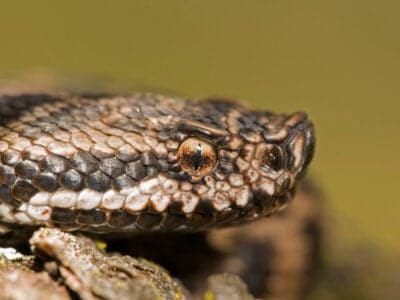
Asp
It was the symbol of royalty in Egypt, and its bite was used for the execution of criminals in Greco-Roman times.
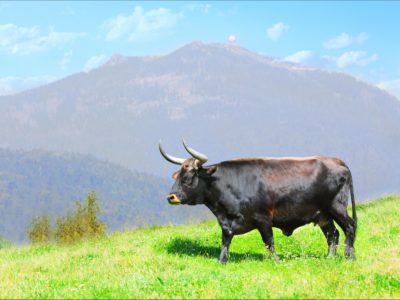
Aurochs
Extinct ancestor of all domesticated cattle!
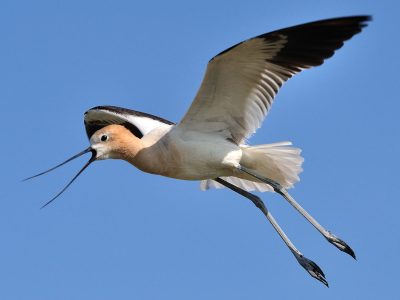
Avocet
Has a curved, upturned beak!
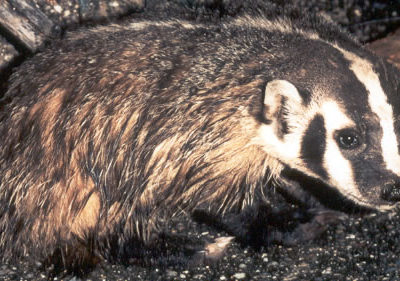
Badger
Can reach speeds of 30 km/h!

Barn Owl
Found everywhere around the world!

Barn Swallow
Older offspring help care for new hatchlings.

Bat
Detects prey using echolocation!

Bed Bugs
Bed bugs feed for 4-12 minutes.

Bee
Rock paintings of bees date back 15,000 years

Beetle
There are more than 350,000 different species

Beewolf wasp
They hunt bees
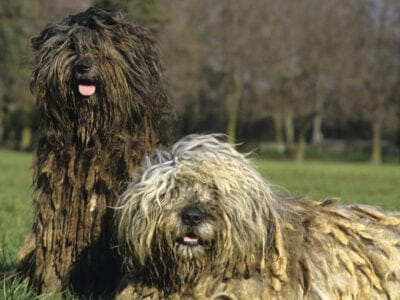
Bergamasco
Bergamascos are excellent problem solvers; they were bred to be independent as they work alongside their nomadic shepherd owners.

Bird
Not all birds are able to fly!

Biscuit Beetle
The biscuit beetle form a symbiotic relationship with yeast

Black Widow Spider
They typically prey on insects!
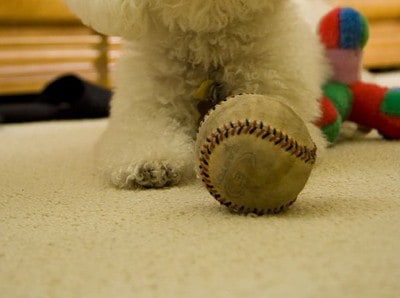
Bolognese Dog
From the northern Italian city of Bologna!
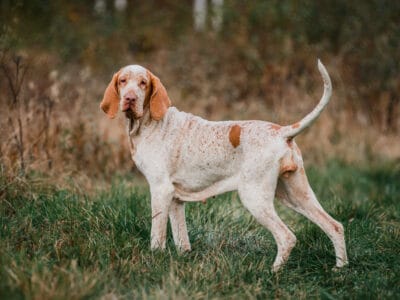
Bracco Italiano
The Bracco Italiano is considered the oldest European pointer. It was a popular hunting dog during the Renaissance, being bred by both the Medici and Gonzaga families.
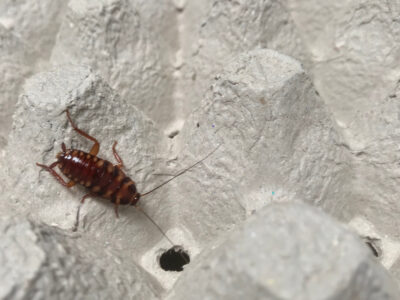
Brown-banded Cockroach
Females glue egg cases to furniture
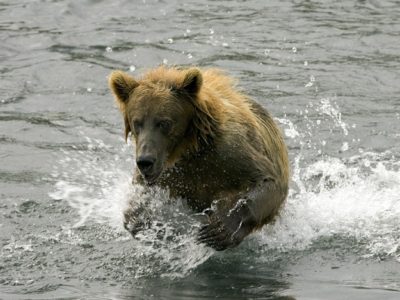
Brown Bear
A dominant predator in it's environment!

Brown Dog Tick
Can live its entire life indoors

Bumblebee
The most common species of bee!

Butterfly
There are thought to be up 17,500 species!
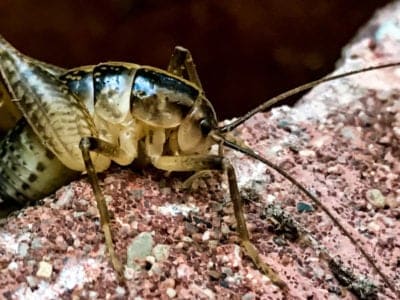
Camel Cricket
The camel crickets that are found in the USA are light brown in color. They also have dark streaks all over their body.
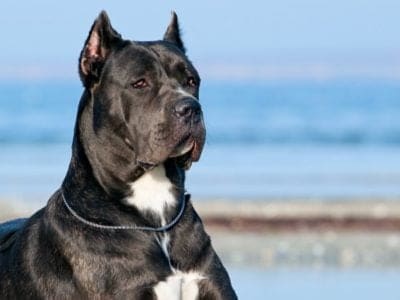
Cane Corso
Cane Corsos nearly became extinct in the mid 1900’s, but the breed was revived by a group of Italians. Even so, they still didn’t become known in many other parts of the world until after 1988.

Carpenter Ant
Carpenter ants can lift up to seven times their own weight with their teeth!

Cat
May have been domesticated up to 10,000 years ago.

Caterpillar
The larvae of a moth or butterfly!

Catfish
There are nearly 3,000 different species!
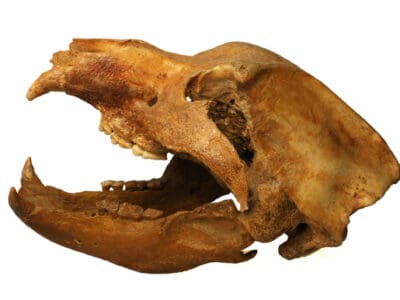
Cave Bear
Cave bears may have been worshiped by primitive humans.

Centipede
There are about 3,000 documented species!
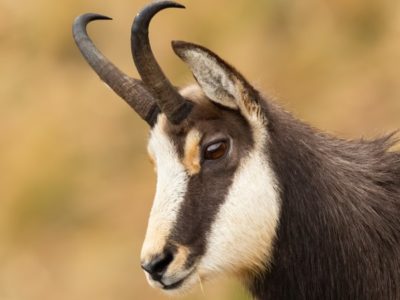
Chamois
Natively found in the European mountains!

Chicken
First domesticated more than 10,000 years ago!

Cicada
Cicadas have one of the longest insect lifespans
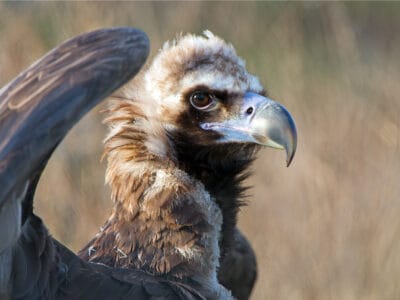
Cinereous Vulture
This vulture can fly at great heights. At least one was found a few thousand feet from the top of Mount Everest.

Cockroach
Dated to be around 300 million years old!

Codling Moth
Pupae are able to undergo diapause to survive poor fruit yield years and winter.
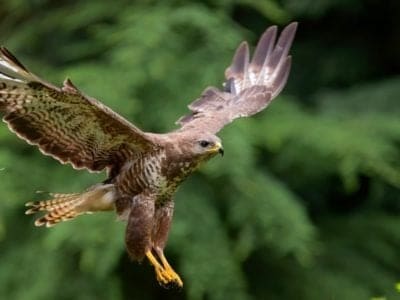
Common Buzzard
The most common raptor in the UK!
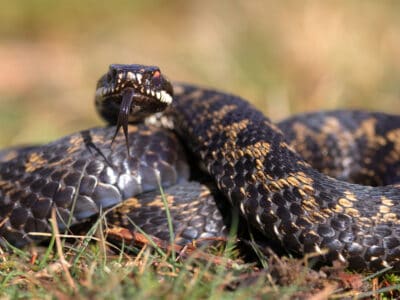
Common European Adder
European adders are the only snake that lives above the Arctic Circle.
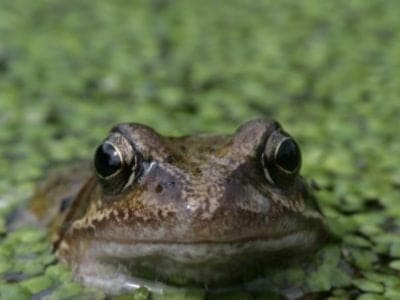
Common Frog
Found throughout the European continent!

Common Furniture Beetle
The common furniture beetle feeds exclusively on wood

Common House Spider
House spiders have the ability to eat most insects in a home.
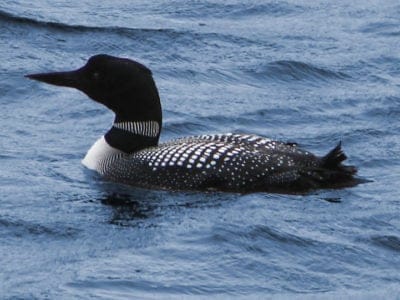
Common Loon
Also known as the Great Northern Diver

Common Raven
A group of ravens is called an unkindness or a conspiracy.
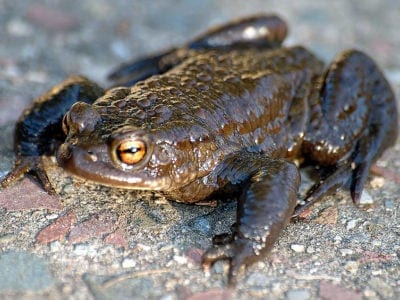
Common Toad
Most active in wet weather!

Cormorant
They can fly 35 mph and dive 150 feet below water.

Cow
There are nearly 1.5 billion worldwide!

Crab
There are 93 different crab groups

Crab Spider
Crab Spiders can mimic ants or bird droppings

Crane
Many are critically endangered species!

Cricket
Male crickets can produce sounds by rubbing their wings together

Crow
A group of these birds is called a Murder.

Deer
There are around 40 different species!

Devil’s Coach Horse Beetle
The Devil’s coach horse beetle can emit a noxious substance to deter predators

Dog
First domesticated in South-East Asia!

Dog Tick
Dog ticks feed on dogs and other mammals

Donkey
First domesticated 5,000 years ago!

Dragonfly
It's larvae are carnivorous!

Dried Fruit Moth
In the event of adverse environmental conditions, dried fruit moth larvae will become dormant and stop developing.

Duck
Rows of tiny plates line their teeth!

Dung Beetle
The dung beetle can push objects many times its own weight
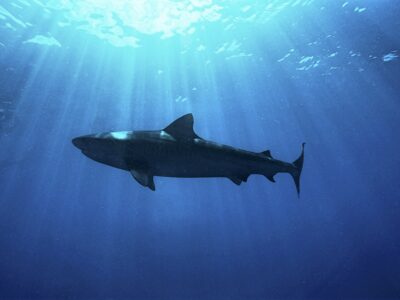
Dusky Shark
The Dusky Shark sometimes eats trash discarded by humans.
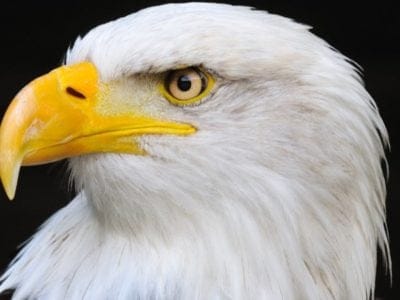
Eagle
Has exceptional eyesight!

Earthworm
They are hermaphrodites, which means they have male and female organs

Earwig
There are nearly 2,000 different species!
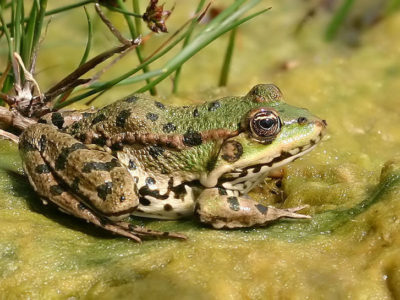
Edible Frog
Are known to guard the muddy banks!

Eel
Eels can be a mere few inches long to 13 feet!
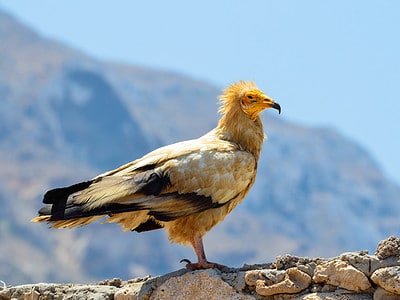
Egyptian Vulture
They steal large ostrich eggs and use rocks and pebbles to crack the shells.
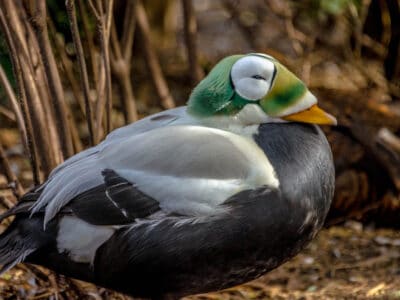
Eider
Eiders are sexually dimorphic, with males being larger and more colorful.
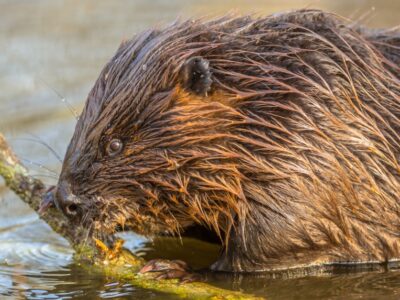
Eurasian Beaver
Eats 20% of its weight daily!

Eurasian Bullfinch
The shy eurasian bullfinch prefers to forage very close to cover.
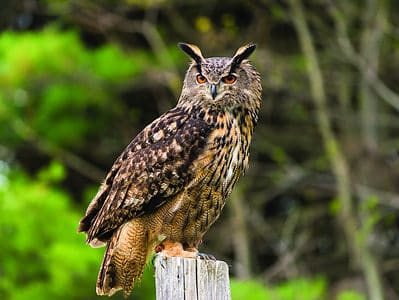
Eurasian Eagle-owl
The Eurasian Eagle-owl is the second largest owl in the world with a wingspan up to six feet!
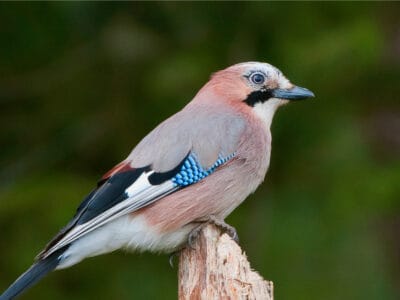
Eurasian Jay
The Eurasian jay has the ability to mimic other sounds
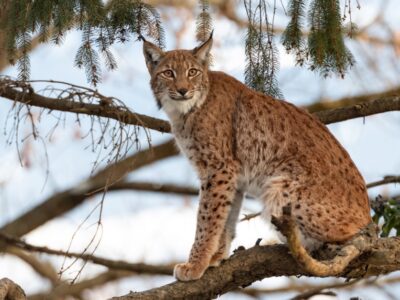
Eurasian Lynx
Eurasian lynxes can survive extreme weather up to elevations of 18,000 feet
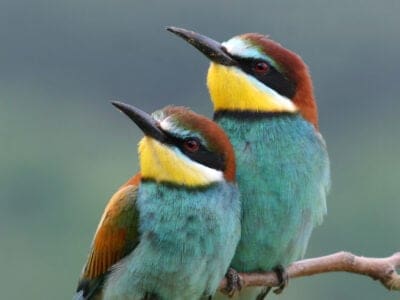
European Bee-Eater
They can eat up to 250 bees per day!
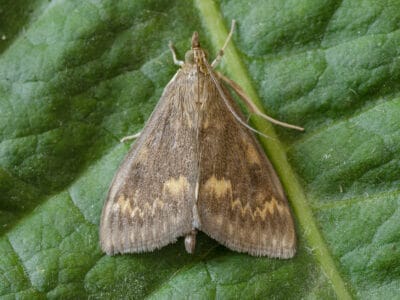
European Corn Borer
Female can lay up to 600 eggs in her 14-day lifespan
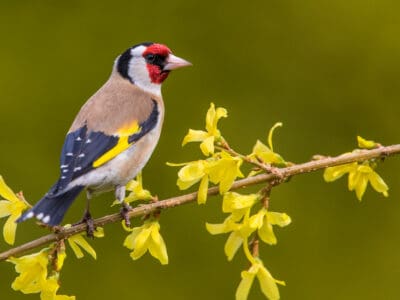
European Goldfinch
They are frequent visitors to backyard feeders, especially those containing niger seeds.
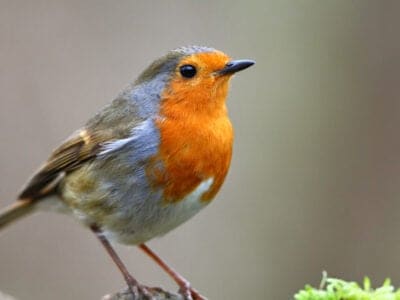
European Robin
Male robins are so aggressive and territorial that they will attack their own reflections.
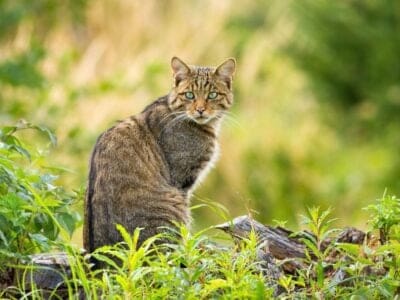
European Wildcat
A group of wild cats is called a destruction

Falcon
The fastest creatures on the planet!

Fallow deer
The fallow deer has more variation in its coat colors than most other deer.

False Widow Spider
False spiders actually prey on black widow spiders and other hazardous spiders
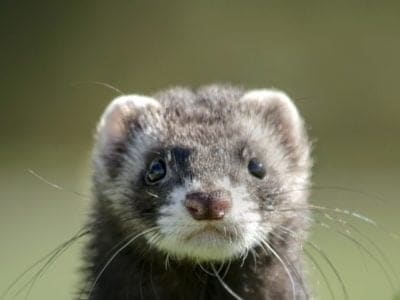
Ferret
Ferrets can be trained to do tricks like dogs!
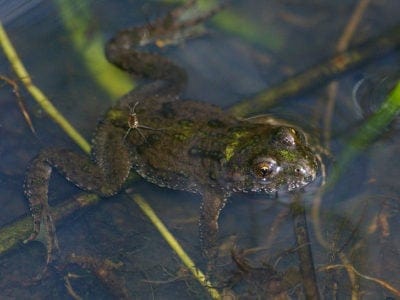
Fire-Bellied Toad
Found across mainland Europe and Asia!
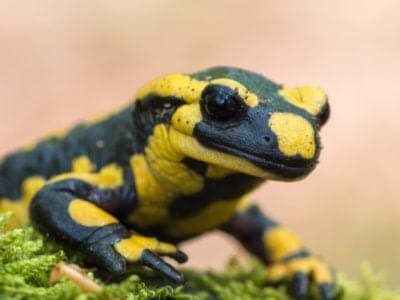
Fire Salamander
Its name comes from the fact that people once believed it was born in fire

Firefly
The firefly produces some of the most efficient light in the world

Flea
Adult fleas can jump up to 7 inches in the air

Fly
There are more than 240,000 different species!
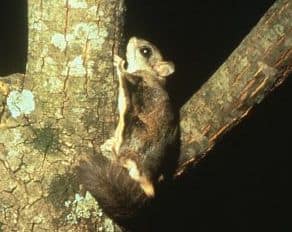
Flying Squirrel
Can glide up to 90 meters!
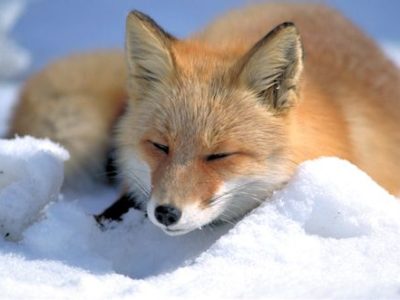
Fox
Only 12 species are considered "true foxes"
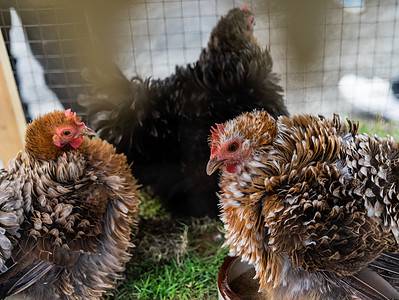
Frizzle Chicken
Frizzle chickens are known for their frizzled feathers, which result from a genetic mutation.

Frog
There are around 7,000 different species!

Fruit Fly
Fruit flies are among the most common research animals in the world
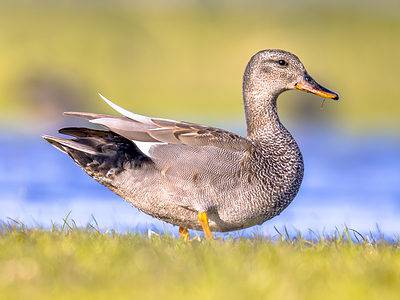
Gadwall
They make many sounds when trying to attract a mate.

German Cockroach
The most common type of urban roach
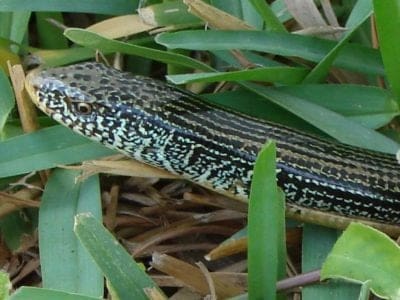
Glass Lizard
Can grow up to 4ft long!

Glowworm
Found inhabiting dense woodland and caves!

Gnat
Males form large mating swarms at dusk

Goat
Most closely related to the Sheep!
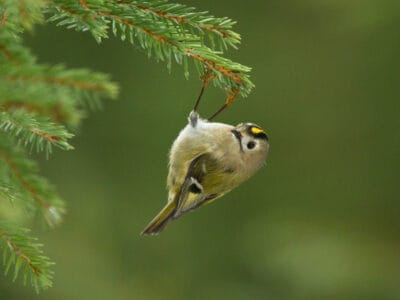
Goldcrest
The goldcrest never starts moving and needs to consume for most of the day to survive. Therefore, in the colder months, it's best that eat 90% a day.
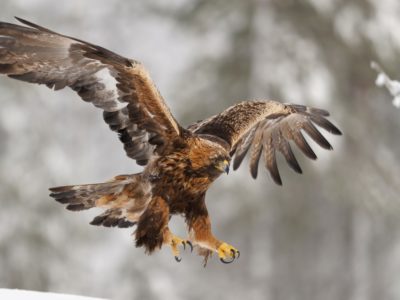
Golden Eagle
Their calls sound like high-pitched screams, but they are quiet most of the time.
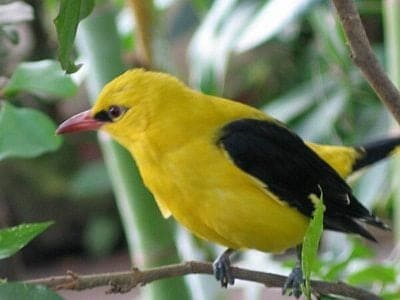
Golden Oriole
Migrates between Europe and Asia!
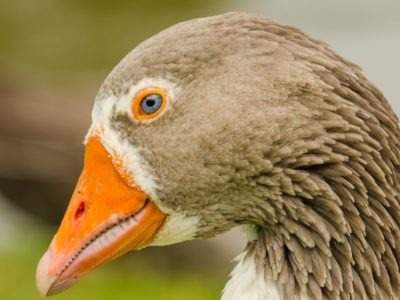
Goose
There are 29 different species!

Grasshopper
There are 11,000 known species!
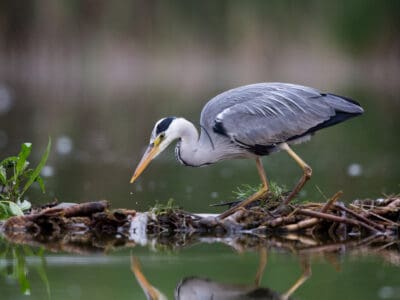
Grey Heron
Male grey herons are picky about their mates. They'll reject a female that they don't fancy.
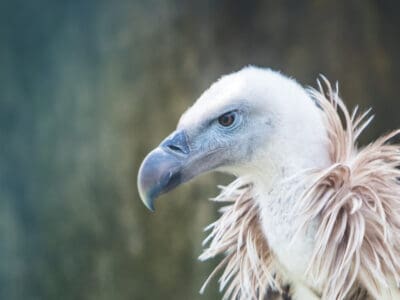
Griffon Vulture
Can spot a dead animal from thousands of feet away
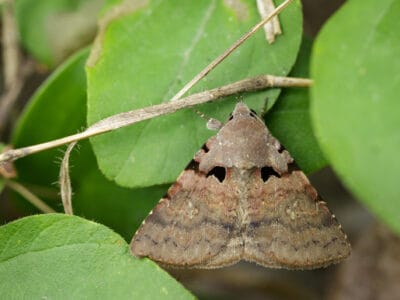
Gypsy Moth
One of the most invasive species in the world

Hamster
Able to run as quickly backwards as forwards!

Hare
Can reach speeds of over 50 mph!

Hawk Moth Caterpillar
Many hawk moth caterpillars eat toxins from plants, but don’t sequester them the way milkweed butterflies do. Most toxins are excreted.
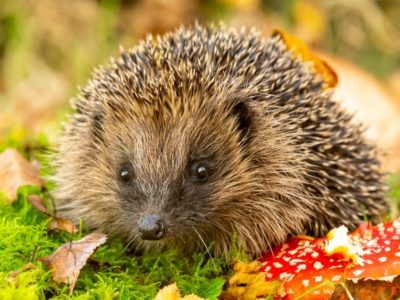
Hedgehog
Thought to be one of the oldest mammals on Earth!

Heron
Inhabits wetlands around the world!
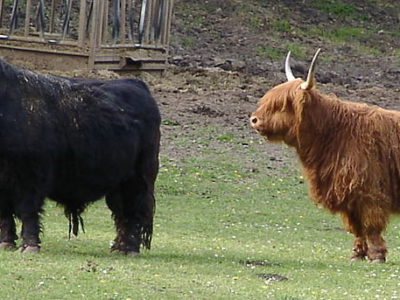
Highland Cattle
Natively found in the Scottish Highlands!

Honey Bee
There are only 8 recognized species!
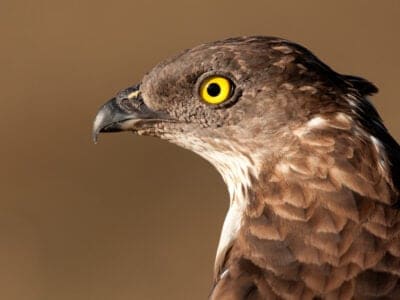
Honey Buzzard
Honey buzzards are medium-sized raptors that earned their names by raiding the nests of bees and wasps.
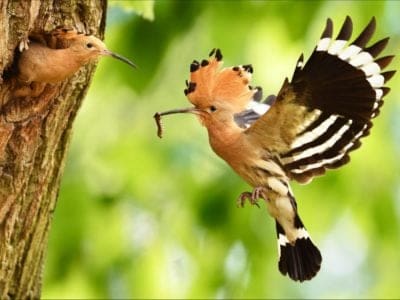
Hoopoe
Stunning bird with a stinky way to deter predators!

Horse
Has evolved over 50 million years!

Horsefly
Horseflies have been seen performing Immelmann turns, much like fighter jets.

Housefly
The fly has no teeth

Human
Thought to have orignated 200,000 years ago!

Huntsman Spider
Some huntsman spiders have an interesting way of moving around. Some cartwheel while others do handsprings or backflips.
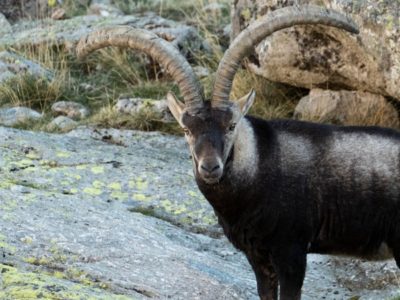
Ibex
Can jump over 6 feet straight up from a standstill

Insects
There are an estimated 30 million species!

Italian Greyhound
The Italian Greyhound is a miniature dog with a big motor and personality!
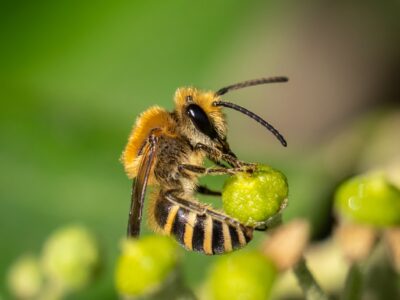
Ivy Bee
N/A
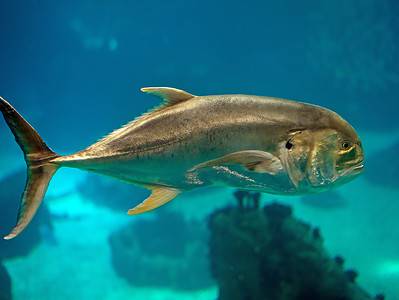
Jack Crevalle
One of the biggest species in the Caranx genus
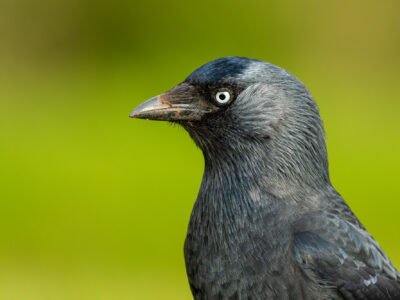
Jackdaw
The jackdaw tends to mate for life with a single partner
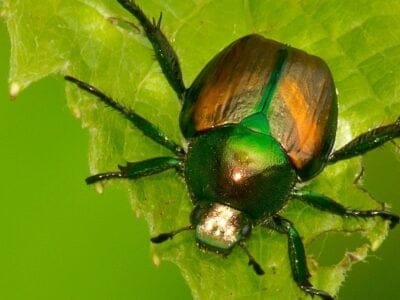
Japanese Beetle
Can clear an entire fruit tree in 15 minutes in a swarm

Jumping Spider
Some can jump 50 times the length of their bodies
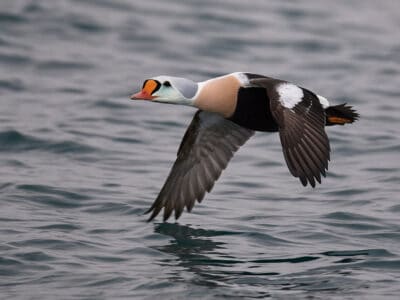
King Eider
The species name, spectabilis, is Latin for “showy” or “remarkable,” referencing the attractiveness of the adult male’s plumage.

Kingfisher
Inhabits wetlands and woodlands worldwide!

Ladybug
There are more than 5,000 species worldwide!
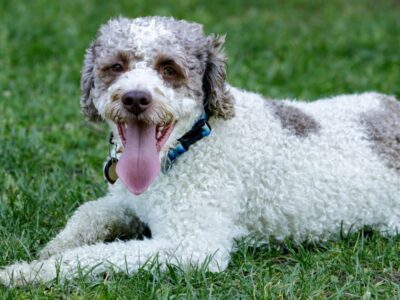
Lagotto Romagnolo
The Lagotto Romagnolo is the only internationally recognized purebred truffle-hunting dog.

Lazarus Lizard
Lazarus Lizards can communicate through chemical and visual signals.

Leech
Has 10 pairs of eyes!
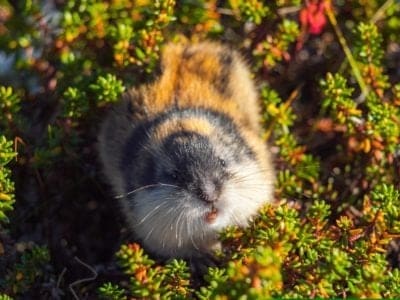
Lemming
Does not hibernate during the bitter Arctic winter!

Linnet
While linnets are monogamous during mating season, they do not mate for life. While breeding pairs are together, the males are highly territorial and will defend the nesting site and the surrounding area.

Lizard
There are around 5,000 different species!
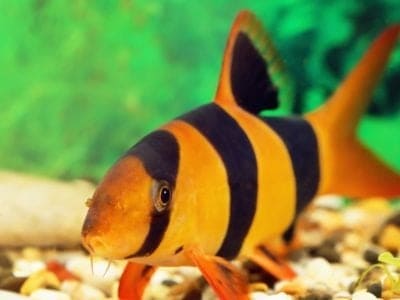
Loach
Have sharp spines below their eyes

Locust
Each locust can eat its weight in plants each day.
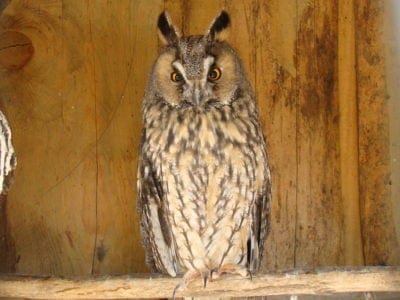
Long-Eared Owl
Ear tufts make it look bigger!

Long-Tailed Tit
Often hangs upside down while feeding!
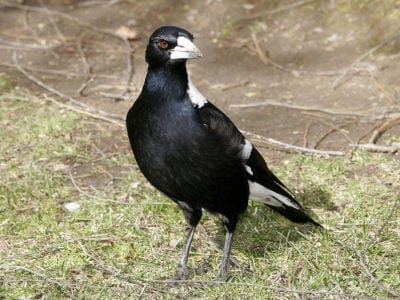
Magpie
They are found across Europe, Asia and Africa!
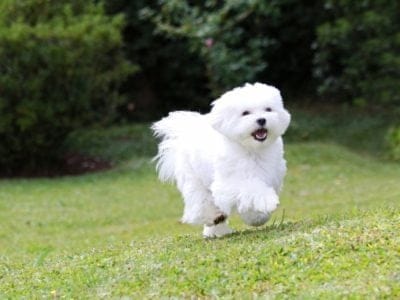
Maltese
Originally bred in Europe!
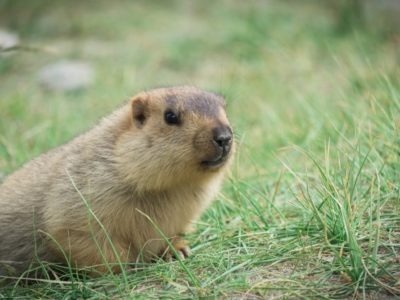
Marmot
A marmot spends 80% of its life below ground

Marsh Frog
Has bright green skin!
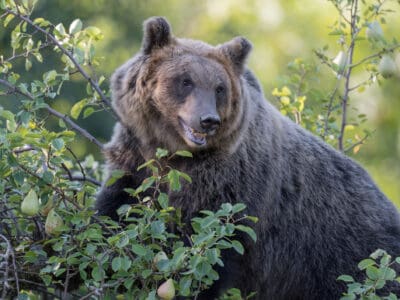
Marsican Brown Bear
They do not fall completely asleep during hibernation but wake up from time to time during the winter to walk around.

Mayfly
There are 2,500 known species worldwide!

Mealybug
They have a symbiotic relationship with ants.
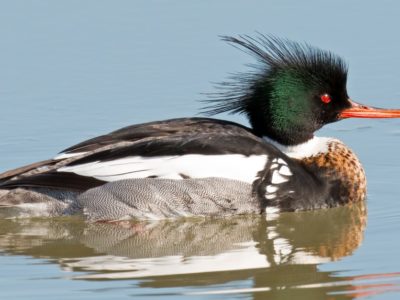
Merganser
They line their nests with their feathers

Millipede
Some species have a poisonous bite!

Mole
Primarily hunts and feeds on Earthworms!

Mole Cricket
Adult Mole crickets may fly as far as 5 miles during mating season and are active most of the year.

Mongrel
Has characteristics of two or more breeds!

Moorhen
Feeds on aquatic insects and water-spiders!

Mosquito
Only the female mosquito actually sucks blood

Moth
There are 250,000 different species!

Mouse
Found on every continent on Earth!

Mule
The offspring of a horse and donkey parents!

Neanderthal
Roamed Asia and Europe for around 100,000 years!
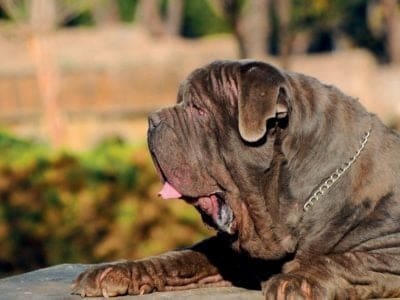
Neapolitan Mastiff
Fearless and extremely protective of it's home!

Nematode
Nematodes range in size from 1/10 of an inch to 28 feet long
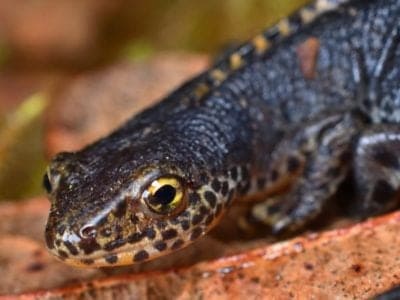
Newt
Able to regrow lost or damaged limbs!

Nightingale
Named more than 1,000 years ago!

No See Ums
There are more than 5,000 species.
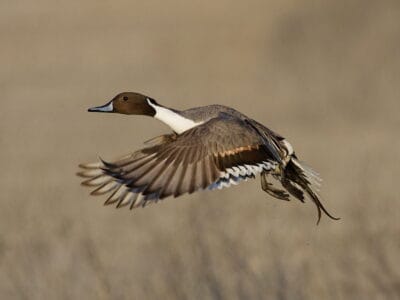
Northern Pintail
Northern pintails migrate at night with speeds reaching 48 miles per hour!
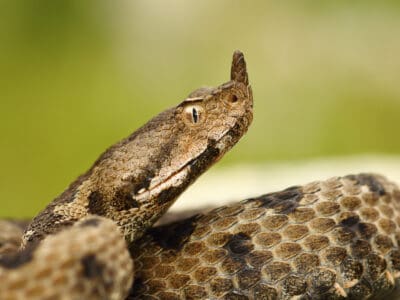
Nose-Horned Viper
The fangs of a nose-horned viper can be as long as half an inch!
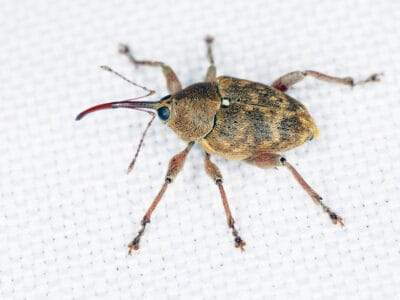
Nut Weevil
Bore holes in tree nuts and lay their eggs inside
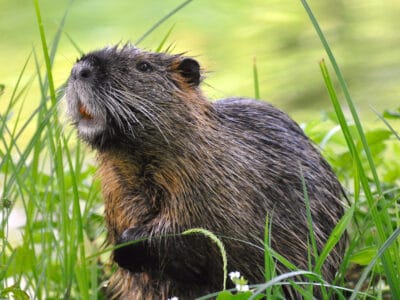
Nutria
An invasive species, one female nutria can birth up to 200 babies in just a few years of living!
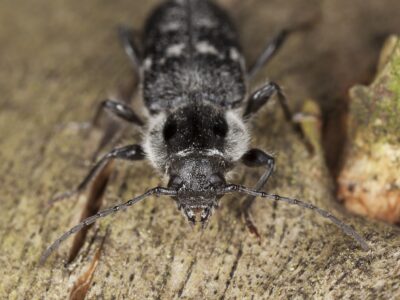
Old House Borer
Depending on the habitat and climate, these beetles can live between 2 to 10 years, often staying in their larval stage for several years, making them extremely dangerous to wooden structures.
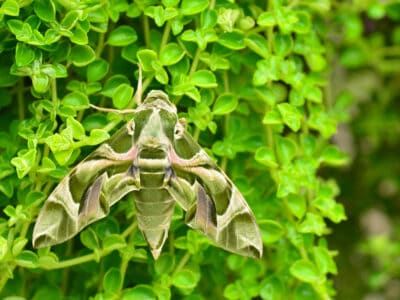
Oleander Hawk Moth
Oleander hawk moth caterpillars feed on the foliage of oleander, an extremely toxic plant to which they are immune.
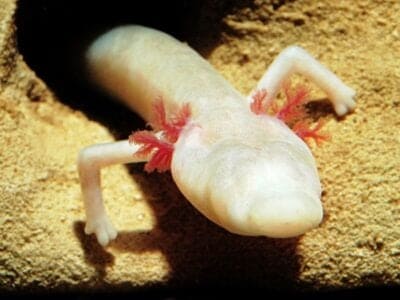
Olm
Inhabits dark underwater caves

Orb Weaver
Females are about four times the size of males
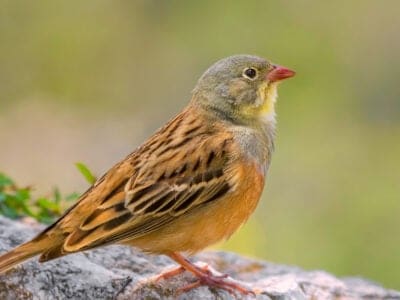
Ortolan Bunting
The tradition of hiding your face with a napkin or towel while eating this bird was begun by a priest who was a friend of the great French gastronome Jean Anthelme Brillat-Savarin.

Osprey
They reuse nesting sites for 70 years!

Otter
There are 13 different species worldwide

Owl
The owl can rotate its head some 270 degrees

Parakeet
Monk parakeets are the only parakeets that actually build nests. They’re also the only parakeets to nest in great colonies.
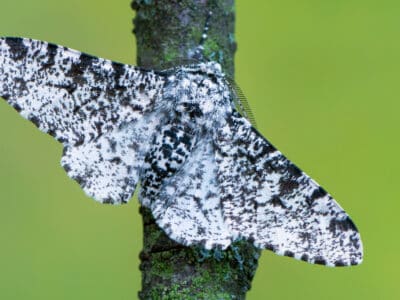
Peppered Moth
Teachers in schools often use the evolution of the peppered moth as a good example of Darwin’s theory of natural selection.

Peregrine Falcon
Fastest animal on Earth

Pheasant
Females lay between 8 and 12 eggs per clutch!
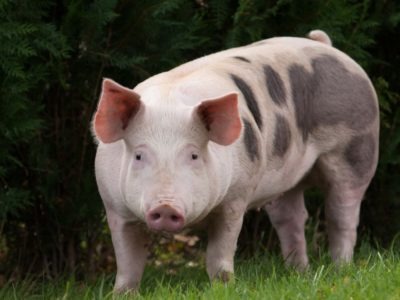
Pig
Thought to have been domesticated in 9,000 BC!

Pigeon
They can find their way back to their nests from up to 1300 miles away.
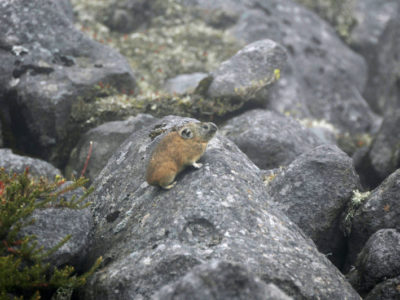
Pika
Found in mountainous regions and rocky areas
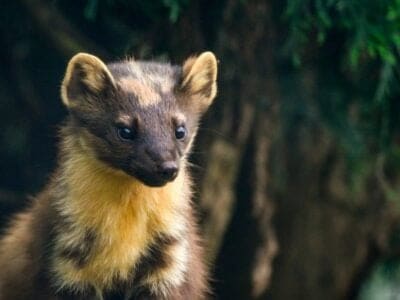
Pine Marten
A pine marten can jump from tree to tree similar to a squirrel.
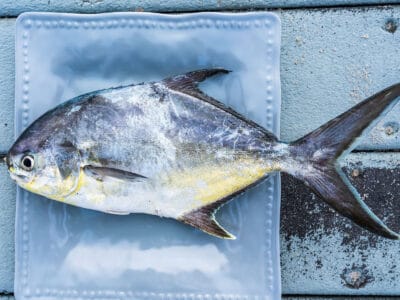
Pompano Fish
They are bottom-feeders

Pond Skater
There are 500 different species!
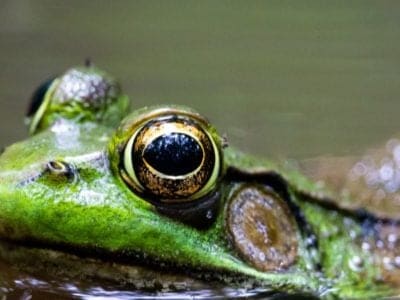
Pool Frog
The rarest amphibian in the UK!
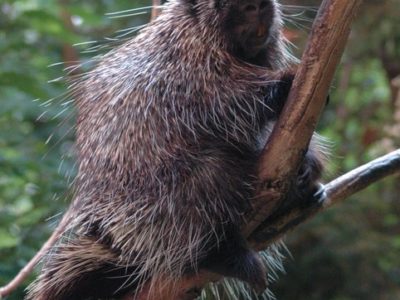
Porcupine
There are 30 different species worldwide!
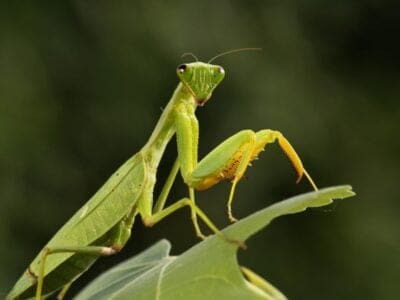
Praying Mantis
The mantis can turn its head 180 degrees.
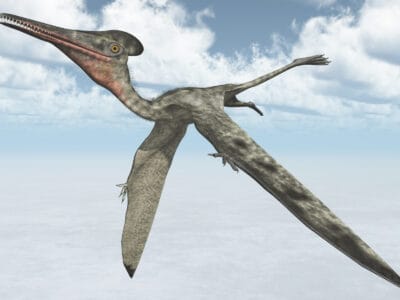
Pterodactyl
Pterodactyl is not technically a dinosaur. Although they lived during the same time as dinosaurs, they are classified as winged reptiles.

Purple Emperor Butterfly
Inhabits deciduous forests!

Puss Moth
Caterpillars squirt formic acid!

Quail
Inhabits woodland and forest areas worldwide!
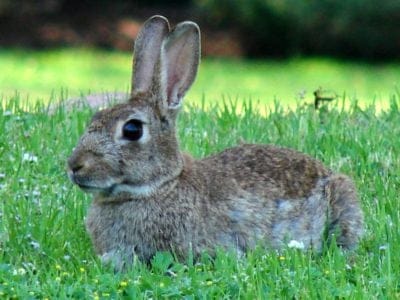
Rabbit
There are more than 300 different species!
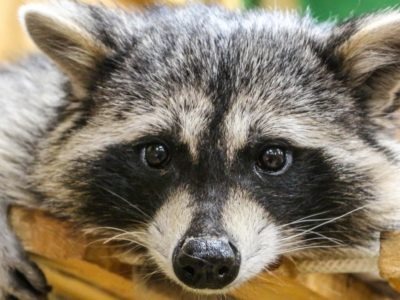
Raccoon
Known to wash their food before eating it!
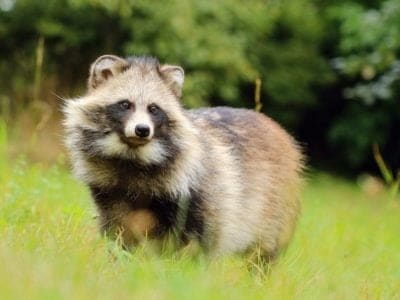
Raccoon Dog
The only hibernating canine!

Rat
Omnivores that eat anything!
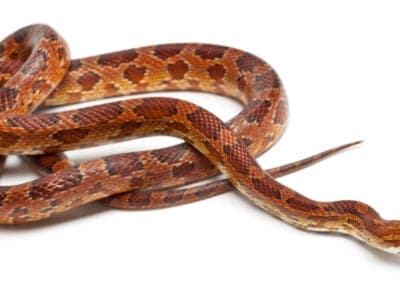
Rat Snakes
Rat snakes are constrictors from the Colubridae family of snakes.

Red Deer
A male red deer shows his age in his antlers, which become longer and more branched every year.
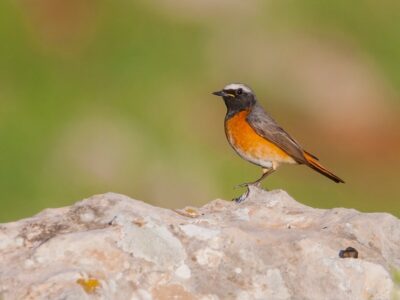
Redstart
They build their nests off the ground in tree holes, cavities, stone walls, and roofs

River Turtle
Inhabits freshwater habitats around the world!
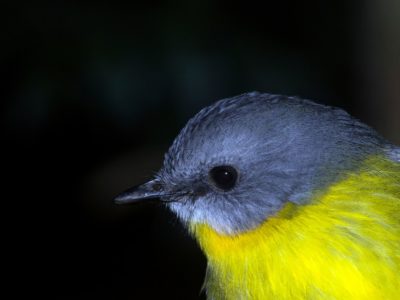
Robin
There are more than 45 species in Australia alone!

Rodents
The capybara, the world’s largest rodent, likes to be in and around bodies of water. Because of this, the Catholic Church in South America decided that it was a fish, and people were allowed to eat it during Lent and First Fridays.

Roe Deer
The roe is one of the most popular game animals in Europe

Rooster
Will mate with the entire flock!
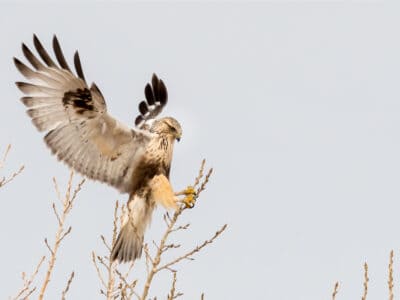
Rough-Legged Hawk (Rough-Legged Buzzard)
Its scientific name, lagopus, is Ancient Greek for “hare” and “foot,” referring to its feathered feet and toes.

Sable Ferret
Ferrets were used during the Revolutionary War to keep down the rat population.
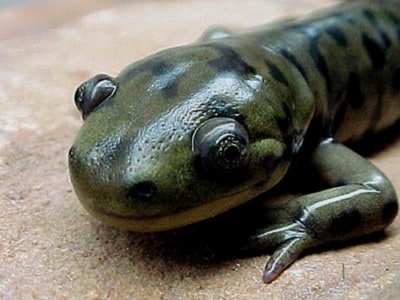
Salamander
There are more than 700 different species!
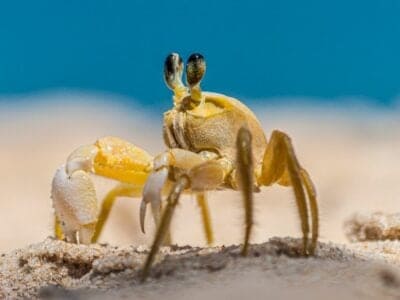
Sand Crab
The sand crab burrows beneath the sand with its tail

Sand Lizard
Males turn green in spring!

Scorpion
There are around 2,000 known species!

Sea Eagle
The sea eagle tends to mate for life with a single partner

Seahorse
Males give birth to up to 1,000 offspring!

Sheep
Around 35 million in the English countryside!
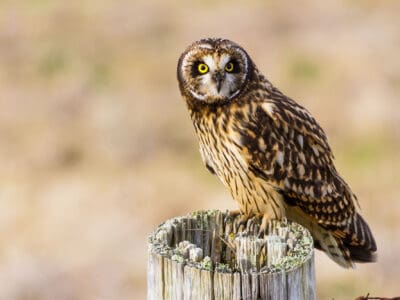
Short-Eared Owl
The short-eared owl is one of the most widespread owl species in the world, covering five continents.

Shrew
The spinal column of the shrew Scutisorex somereni is so strong and reinforced that it can support the weight of an adult human.

Shrimp
There are 2,000 different species worldwide!

Skink Lizard
Some skinks lay eggs in some habitats while giving birth to skinklets in other habitats.
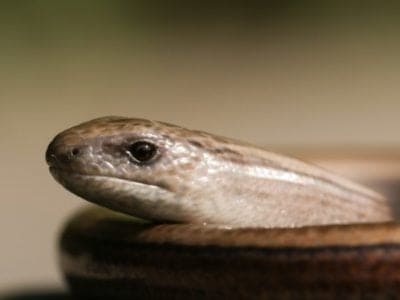
Slow Worm
Found widely throughout British gardens!

Slug
They glide around on one foot, which is aided by the slime they produce

Smokybrown Cockroach
Has up to 45 eggs per egg case

Snail
There are nearly 1,000 different species!

Snake
There are around 4,000 known species worldwide
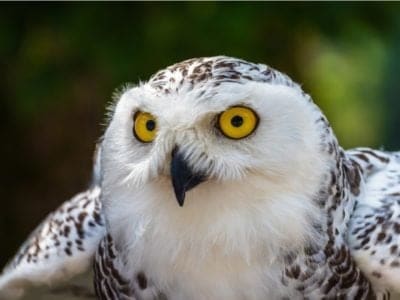
Snowy Owl
One of the largest owl species in the world!
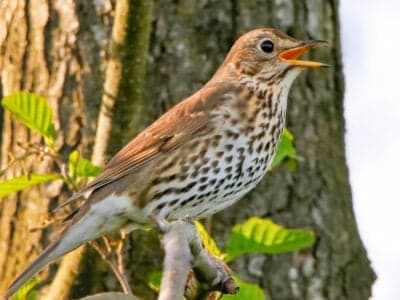
Song Thrush
A male song thrush can have over 100 phrases in his repertoire of songs and can imitate pet birds, telephones and other man-made objects.
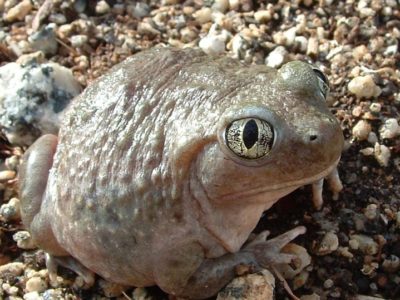
Spadefoot Toad
They spend most of their time underground!

Sparrow
There are 140 different species!

Spider Wasp
They prey on spiders to feed their larvae or they parasitize other spider wasps.
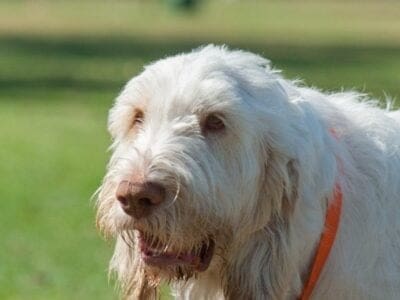
Spinone Italiano
They're one of the oldest hunting breeds on Earth.

Squirrel
Small rodents found in woodlands worldwide!

Stick Insect
There are more than 3,000 different species!
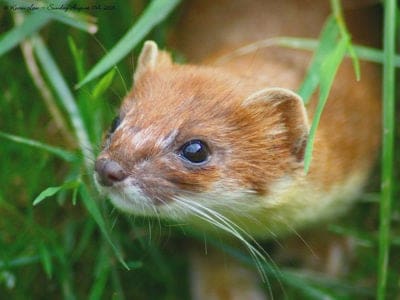
Stoat
Average adults weigh about 200 grams!

Stork
They can’t sing like other birds.

Swan
Populations have been affected by pollution!

Tawny Owl
The most widespread owl in Europe!
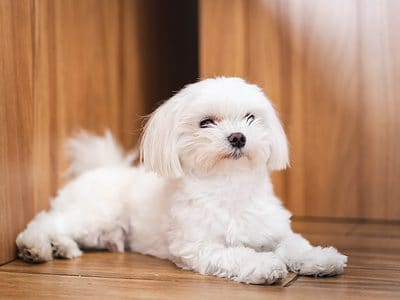
Teacup Maltese
Greeks used to build tombs for their Maltese.

Termite
Their mounds can be up to 9 meters tall!

Theropod
Some theropods had feathers and may have been ancestors of modern birds.
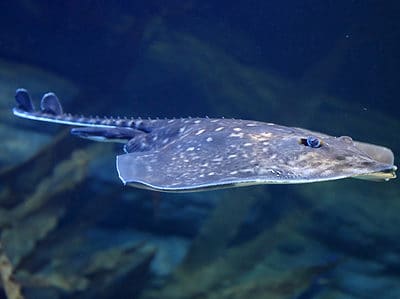
Thornback Ray
The skate with the biggest spines!

Thrush
The American robin is called the robin because its red breast reminded European settlers of the robin back in the old country.

Tick
They inject hosts with a chemical that stops them from feeling the pain of the bite

Tiger Beetle
The adult tiger beetle is one of the fastest land insects in the world
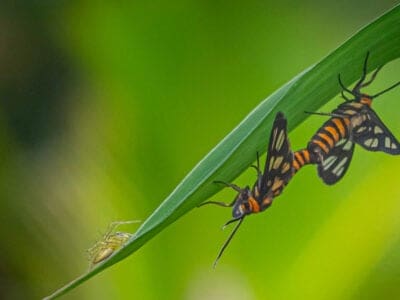
Tiger Moth
The bright colors of this moth are a signal to predators that it has a terrible taste.

Tortoise
Can live until they are more than 150 years old!

Trapdoor spider
Ambush their prey using a trapdoor made of silk
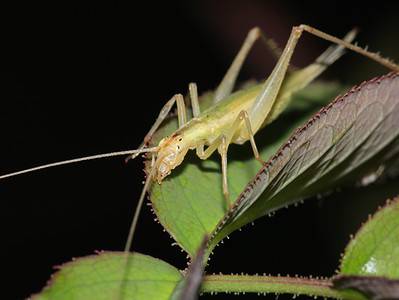
Tree Cricket
They make music with their wings

Tree Frog
Found in warmer jungles and forests!

Turtles
Some species of aquatic turtles can get up to 70 percent of their oxygen through their butt.
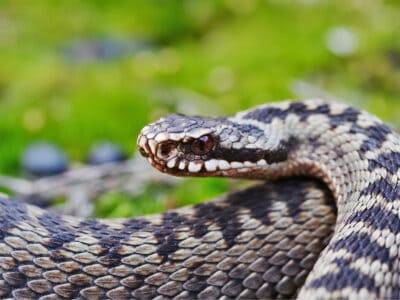
Viper
Vipers are one of the most widespread groups of snakes and inhabit most
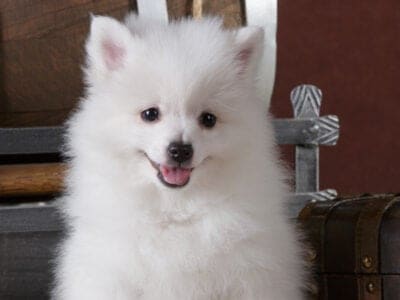
Volpino Italiano
Almost went extinct before American Eskimo Dog breeders showed interest.

Vulture
There are 30 different species worldwide!

Wasp
There are around 75,000 recognised species!
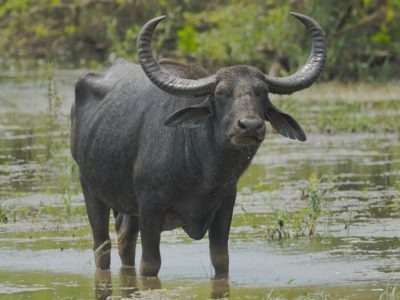
Water Buffalo
Has been domesticated for thousands of years!
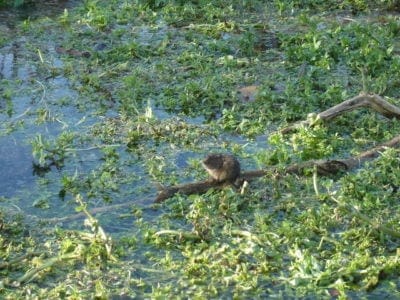
Water Vole
The largest Vole species in the UK!
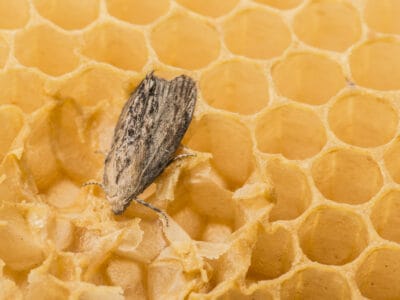
Wax Moth
The Wax Moth larvae are more dangerous than the adult.

Weasel
The smallest carnivorous mammal in the world!

White Ferret / Albino Ferrets
There are two different types of white ferrets!
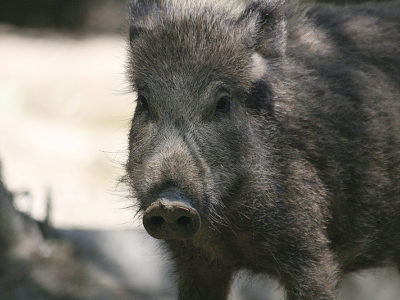
Wild Boar
Males have a top tusk to sharpen the bottom one!

Winter Moth
Only the males fly and the females walk.
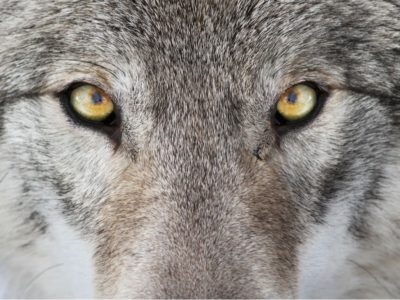
Wolf
Thought to date back more than 300,000 years!

Wolf Spider
Carnivorous arachnid that hunts its prey.

Woodlouse
This animal can roll up into a ball
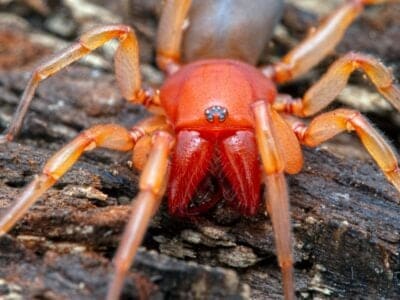
Woodlouse Spider
Unlike most spiders, woodlouse spiders don’t build a web.

Woodpecker
There are 200 different species!

Worm
Doesn’t have eyes.
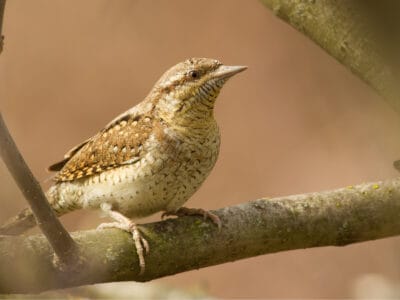
Wryneck
They feign death by making their bodies limp and closing their eyes.

Xeme (Sabine’s Gull)
They follow after seals and whales to eat their scraps.

Yellowhammer
It interbreeds with the pine bunting
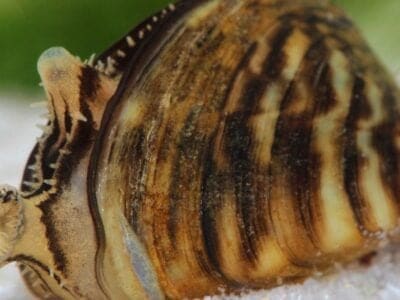
Zebra Mussels
A female zebra mussel can deposit 30,000 to 1,000,000 eggs each year!
Italian Animals List
- Admiral Butterfly
- Ant
- Apennine Wolf
- Arctic Char
- Armyworm
- Asian Lady Beetle
- Asp
- Aurochs
- Avocet
- Badger
- Barn Owl
- Barn Swallow
- Bat
- Bed Bugs
- Bee
- Beetle
- Beewolf wasp
- Bergamasco
- Bird
- Biscuit Beetle
- Black Widow Spider
- Bolognese Dog
- Bracco Italiano
- Brown-banded Cockroach
- Brown Bear
- Brown Dog Tick
- Bumblebee
- Butterfly
- Camel Cricket
- Cane Corso
- Carpenter Ant
- Cat
- Caterpillar
- Catfish
- Cave Bear
- Centipede
- Chamois
- Chicken
- Cicada
- Cinereous Vulture
- Cockroach
- Codling Moth
- Common Buzzard
- Common European Adder
- Common Frog
- Common Furniture Beetle
- Common House Spider
- Common Loon
- Common Raven
- Common Toad
- Cormorant
- Cow
- Crab
- Crab Spider
- Crane
- Cricket
- Crow
- Cuckoo
- Deer
- Devil’s Coach Horse Beetle
- Dog
- Dog Tick
- Donkey
- Dormouse
- Dragonfly
- Dried Fruit Moth
- Duck
- Dung Beetle
- Dusky Shark
- Eagle
- Earthworm
- Earwig
- Edible Frog
- Eel
- Egyptian Vulture
- Eider
- Eurasian Beaver
- Eurasian Bullfinch
- Eurasian Eagle-owl
- Eurasian Jay
- Eurasian Lynx
- European Bee-Eater
- European Corn Borer
- European Goldfinch
- European Robin
- European Wildcat
- Falcon
- Fallow deer
- False Widow Spider
- Ferret
- Fire-Bellied Toad
- Fire Salamander
- Firefly
- Flea
- Fly
- Flying Squirrel
- Fox
- Frizzle Chicken
- Frog
- Fruit Fly
- Gadwall
- German Cockroach
- Glass Lizard
- Glowworm
- Gnat
- Goat
- Goldcrest
- Golden Eagle
- Golden Oriole
- Goose
- Grasshopper
- Grey Heron
- Griffon Vulture
- Gypsy Moth
- Hamster
- Hare
- Hawk Moth Caterpillar
- Hedgehog
- Heron
- Highland Cattle
- Honey Bee
- Honey Buzzard
- Hoopoe
- Horse
- Horsefly
- Housefly
- Human
- Huntsman Spider
- Ibex
- Insects
- Italian Greyhound
- Ivy Bee
- Jack Crevalle
- Jackdaw
- Japanese Beetle
- Jumping Spider
- King Eider
- Kingfisher
- Ladybug
- Lagotto Romagnolo
- Lazarus Lizard
- Leech
- Lemming
- Linnet
- Lizard
- Loach
- Locust
- Long-Eared Owl
- Long-Tailed Tit
- Magpie
- Maltese
- Maremma Sheepdog
- Marmot
- Marsh Frog
- Marsican Brown Bear
- Mayfly
- Mealybug
- Merganser
- Millipede
- Mole
- Mole Cricket
- Mongrel
- Moorhen
- Mosquito
- Moth
- Mouse
- Mule
- Neanderthal
- Neapolitan Mastiff
- Nematode
- Newt
- Nightingale
- No See Ums
- Northern Pintail
- Nose-Horned Viper
- Nut Weevil
- Nutria
- Old House Borer
- Oleander Hawk Moth
- Olm
- Orb Weaver
- Ortolan Bunting
- Osprey
- Otter
- Owl
- Parakeet
- Peppered Moth
- Peregrine Falcon
- Pheasant
- Pig
- Pigeon
- Pika
- Pike Fish
- Pine Marten
- Pompano Fish
- Pond Skater
- Pool Frog
- Porcupine
- Praying Mantis
- Pterodactyl
- Purple Emperor Butterfly
- Puss Moth
- Quail
- Rabbit
- Raccoon
- Raccoon Dog
- Rat
- Rat Snakes
- Red Deer
- Redstart
- River Turtle
- Robin
- Rodents
- Roe Deer
- Rooster
- Rough-Legged Hawk (Rough-Legged Buzzard)
- Sable Ferret
- Salamander
- Sand Crab
- Sand Lizard
- Scorpion
- Sea Eagle
- Seahorse
- Sheep
- Short-Eared Owl
- Shrew
- Shrimp
- Skink Lizard
- Slow Worm
- Slug
- Smokybrown Cockroach
- Snail
- Snake
- Snowy Owl
- Song Thrush
- Spadefoot Toad
- Sparrow
- Spider Wasp
- Spinone Italiano
- Squirrel
- Stick Insect
- Stoat
- Stork
- Swallowtail Butterfly
- Swan
- Tawny Owl
- Teacup Maltese
- Termite
- Theropod
- Thornback Ray
- Thrush
- Tick
- Tiger Beetle
- Tiger Moth
- Tortoise
- Trapdoor spider
- Tree Cricket
- Tree Frog
- Turtles
- Viper
- Volpino Italiano
- Vulture
- Wasp
- Water Buffalo
- Water Vole
- Wax Moth
- Weasel
- White Ferret / Albino Ferrets
- Wild Boar
- Winter Moth
- Wolf
- Wolf Spider
- Woodlouse
- Woodlouse Spider
- Woodpecker
- Worm
- Wryneck
- Xeme (Sabine’s Gull)
- Yellowhammer
- Zebra Mussels




